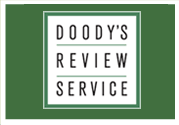|
|
|
eBook/Digital Version available from:
|
 Score: 94
Score: 94 |
 |
| The City in Need: Urban Resilience and City Management in Disruptive Disease Outbreak Events |
 |
ISBN: 978-9811554865,
304 pages,
Hard Cover
ISBN-10: 9811554862 |
 |
| Copyright: |
2020 |
 |
| Edition: |
1st |
 |
| Author: |
Cheshmehzangi, Ali, PhD |
 |
|
Specialties:
|
Public Health |
 |
| Publisher: |
Springer |
 |
| List Price: |
$109.99 |
 |
| Google: |
|
|
 |
|
|
|
|
Reviewer:
|
Frances Sparti,
DNP, MSN, BSN
(Simmons University)
|
 |
|
Range
|
Question
|
Score
|
| 1-10 |
Are the author's objectives met? |
10 |
| 1-10 |
Rate the worthiness of those objectives. |
10 |
| 1-5 |
Is this written at an appropriate level? |
5 |
| 1-5 |
Is there significant duplication? (1=significant, 5=insignificant) |
4 |
| 1-5 |
Are there significant omissions? (1=significant, 5=insignificant) |
5 |
| 1-5 |
Rate the authority of the authors. |
5 |
| 1-5 |
Are there sufficient illustrations? |
5 |
| 1-5 |
Rate the pedagogic value of the illustrations. |
5 |
| 1-5 |
Rate the print quality of the illustrations. |
5 |
| 1-5 |
Are there sufficient references? |
1 |
| 1-5 |
Rate the currency of the references. |
5 |
| 1-5 |
Rate the pertinence of the references. |
5 |
| 1-5 |
Rate the helpfulness of the index. |
N/A |
| 1-5 |
If important in this specialty, rate the physical appearance of the book |
N/A |
| 1-10 |
Is this a worthwhile contribution to the field? |
10 |
| 1-10 |
If this is a 2nd or later edition, is this new edition needed? |
N/A |
|
 |
|
Reviewer:
|
Frances Sparti,
DNP, MSN, BSN
(Simmons University)
|
 |
|
Description
|
| This up-to-date book reviews the necessity for urban resilience in the time of a hypothetical disease outbreak event and the resulting disruption. It focuses on the needs of cities during a disease outbreak, the preparedness and reaction of the key players, and the resilience required to recover. |
 |
|
Purpose
|
| The initial purpose was to provide a detailed framework for addressing disruptive disease outbreaks, with Ebola, SARS-CoV, and MERS-CoV as examples. However, while the book was being written, COVID-19 became a much more significant and worldwide pandemic. |
 |
|
Audience
|
| Readers who study this book will be individuals heavily involved in addressing disruptive outbreak events, and this book will add to other literature focusing on natural disasters. Healthcare providers, public health officials, and government agencies from local to federal need to be prepared for novel and recurrent situations. Planning with an eye on the constantly changing disease situation is a needed skill set for anyone involved in public health management in city government, as well as county, state, and national government agencies. The author of this book is a scholar and writer of numerous books and articles on urban design and the framework for urban resilience. |
 |
|
Features
|
| This detailed book is divided into six chapters. The introduction begins with a general overview, defining what constitutes an outbreak event, and how vulnerable cities across the globe can be. As stated in the introduction, regardless of all our past advances, "a novel virus managed to put everything to a halt" (p. 1). The second chapter reviews how cities cope with outbreak events, including understanding the event and the six phases of outbreaks. These events may have no precedent and scientific knowledge will develop over time. Chapter 3 details preparedness, one of the most important concepts, although the outbreak may evolve as it continues. Chapter 4 addresses responsiveness, which initially will need to be driven by the scientific and healthcare communities. However, as with COVID-19, there are widespread economic consequences. Many aspects of local services need to be involved, from transportation, safety and security, food supply, and other necessities. Chapters 5 and 6 reflect on the disruptions and recommendations for cities in need, which will likely come in the recovery and post-recovery phases of an outbreak. |
 |
|
Assessment
|
| This book proposes to extend the necessary city resilience and city management to times when there is a widespread disease outbreak without a clear spread, with increasing severity, and, as noted in the most recent outbreak, "alarming levels of inaction at the global level" (p. 3). Planning and a clear framework for key players and agencies will ideally make outbreaks less disruptive in the future. The current COVID-19 outbreak has emphasized the lack of healthcare infrastructure and highlights the extreme importance of disaster management strategies. |
 |
|
|
|
|
|
|
|
